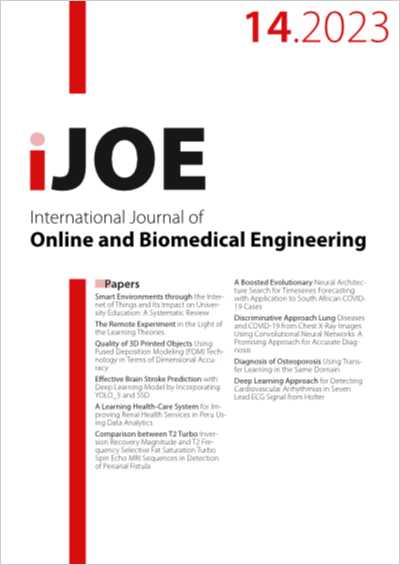A Boosted Evolutionary Neural Architecture Search for Timeseries Forecasting with Application to South African COVID-19 Cases
DOI:
https://doi.org/10.3991/ijoe.v19i14.41291Keywords:
TIme Series, Epidemilogical Analysis, Gated Recurrent Units, Neural Architecture SearchAbstract
In recent years, there has been an increase in studies on time-series forecasting for the future occurrence of disease incidents. Improvements in deep learning approaches offer techniques for modelling long-term temporal relationships. Nonetheless, this design practice is rigorously painstaking, prone to errors, and requires human expertise. The advent of feature enrichment with automatic architecture search typically optimises the discovery of new neural architectures applicable in domains such as time-series modelling. The main methodological contribution of this study is an approach for time-series forecasting using feature-enriched filters and an evolutionary neural architecture search with sequence-to-sequence gated recurrent units (GRU-Seq2Seq). This is applied to the prediction of daily cases of coronavirus disease in South Africa. The highly pathogenic coronavirus pandemic incident data was modelled with filters, optimised hyper-parameter search trials and an evolutional neural algorithm. The proposed model was benchmarked against ARIMA and SARIMA. The model predicted trends for 30, 60 and 90-day horizons and evaluated them for 7, 14 and 31 days. Simulation results demonstrate that observed daily case counts with added filters and evolutionary search optimisation for forecasting improve performance accuracy. Generally, the proposed bFilter+GRU-Seq2Seq with optimal search configuration outperformed ARIMA and SARIMA with lower error scores and higher performance metrics, with an R2 score of 7.48E-01 for a 30-day forecast horizon.
Downloads
Published
How to Cite
Issue
Section
License
Copyright (c) 2023 Oluwole Akinola, Wang Qingguo, Peter Olukanmi, Marwala Tshilidzi

This work is licensed under a Creative Commons Attribution 4.0 International License.



